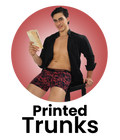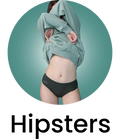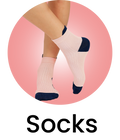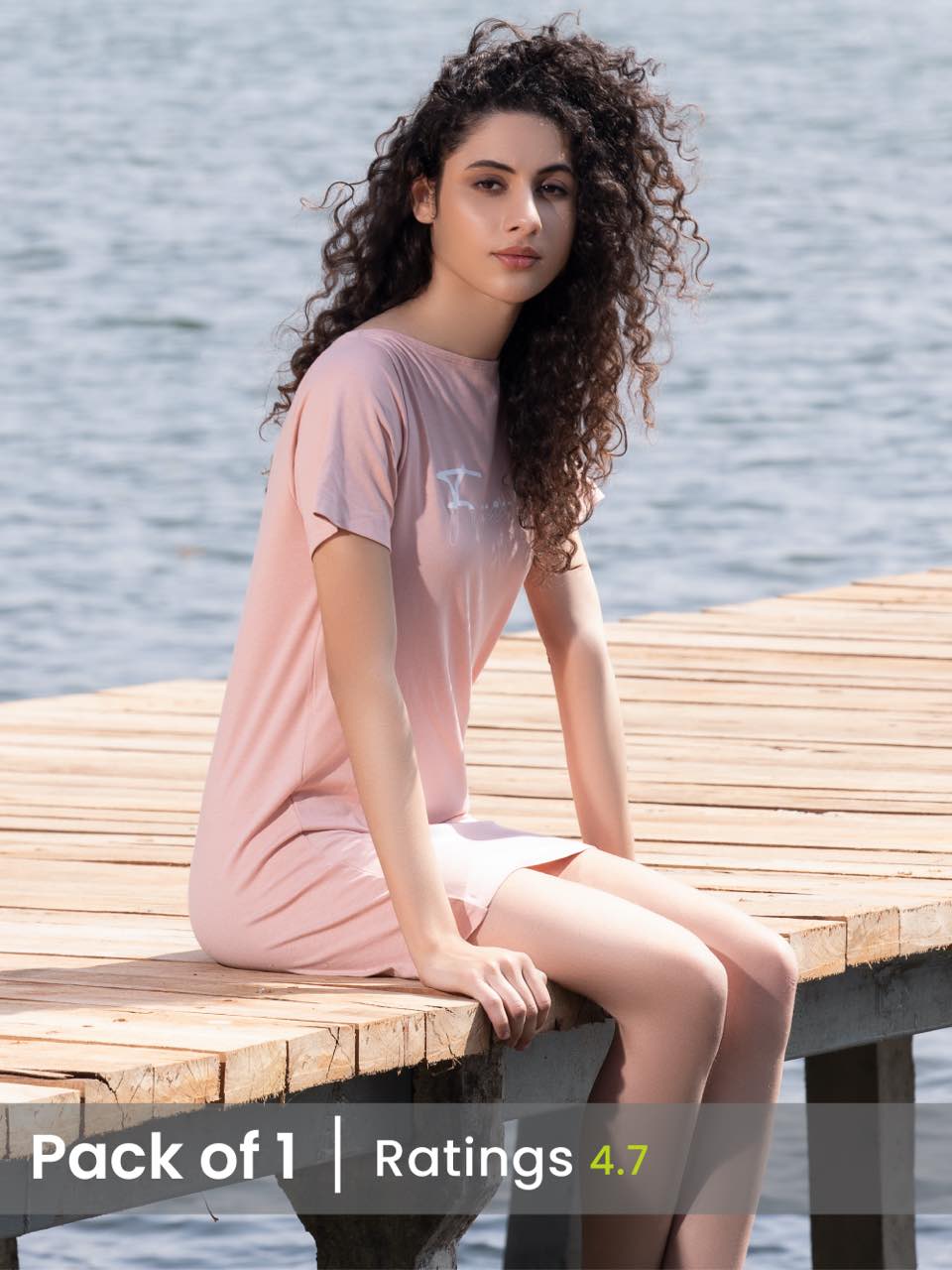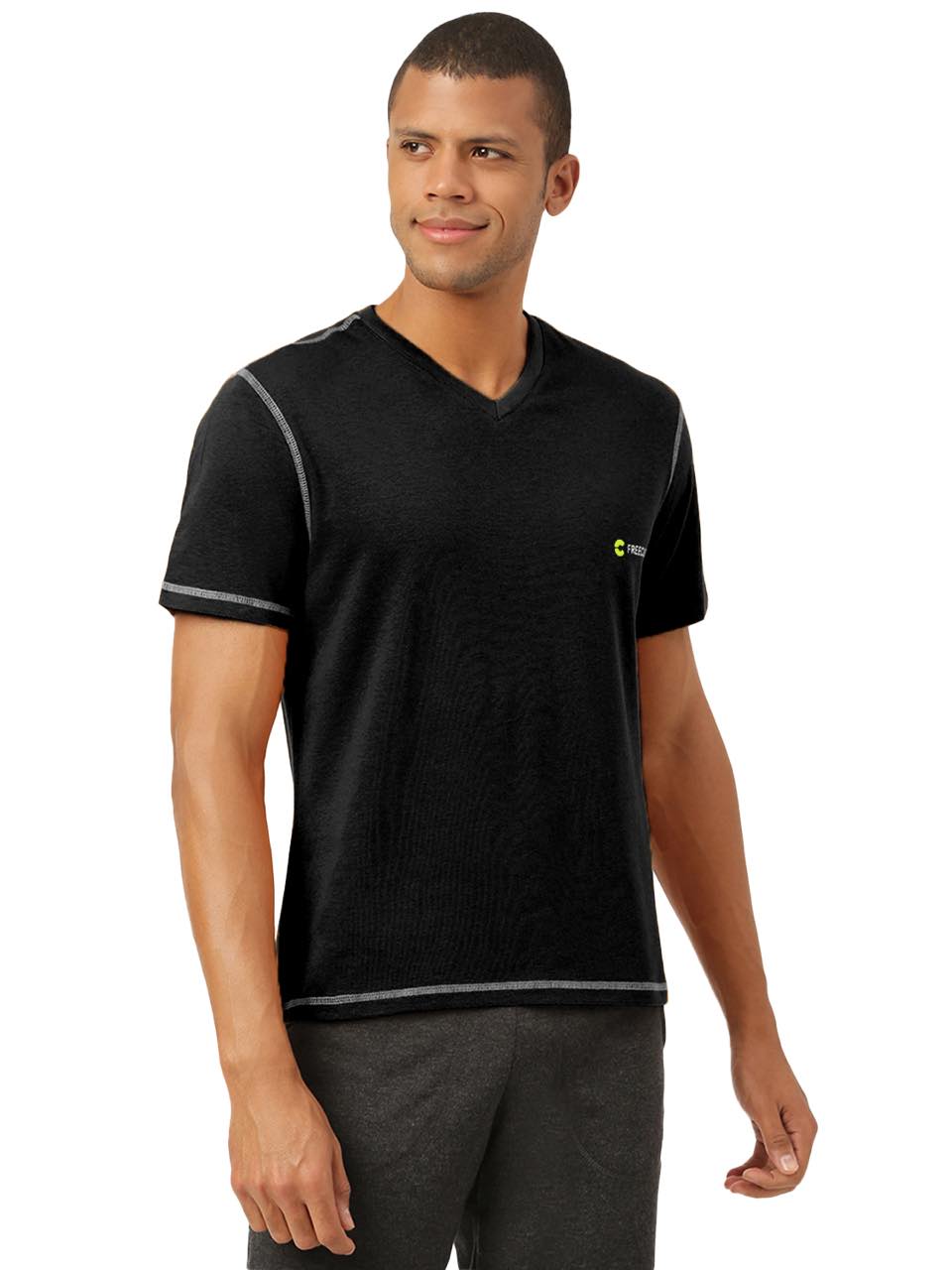
The Crucial Role of Performance-Oriented Gym Clothes for Women
In the pursuit of fitness, whether you're lifting weights, mastering yoga poses, or hitting the track, the attire you choose plays a far more significant role than mere aesthetics. For many women, investing in the right gym clothes for women is a foundational step towards maximizing performance, ensuring ultimate comfort. even preventing injuries. It's about empowering your body to move freely, stay regulated. feel confident, transforming your workout experience from a chore into an opportunity for growth.
Think of your gym clothes as an extension of your body, a second skin designed to support your every move. Ill-fitting or unsuitable garments can chafe, restrict motion, trap sweat. ultimately distract you from your fitness goals. Conversely, well-chosen gym clothes for women can enhance blood circulation, provide necessary support. regulate body temperature, allowing you to push your limits comfortably and effectively. This section delves into why selecting appropriate activewear is non-negotiable for any woman serious about her fitness journey.
Understanding Fabric Technologies: The Core of Performance and Comfort
The innovation in activewear fabrics has revolutionized gym clothes for women, moving far beyond traditional cotton. Modern materials are engineered with specific properties to enhance your workout experience. Understanding these technologies is key to making informed choices.
- Moisture-Wicking This is arguably the most critical feature. Moisture-wicking fabrics are designed to pull sweat away from your skin and transfer it to the outer surface of the fabric, where it can evaporate quickly. This process keeps you dry, prevents chafing. helps regulate body temperature, crucial for both comfort and hygiene. Common materials include polyester, nylon. blends with spandex.
- Breathability Breathable fabrics allow air to circulate freely, preventing heat buildup and promoting ventilation. This is particularly vital during intense workouts or in warm environments. Mesh panels, laser-cut perforations. specialized weaves contribute to breathability, ensuring your gym clothes for women don't feel stifling.
- Stretch and Compression
- Stretch Fabrics with excellent stretch, often containing spandex (Lycra or Elastane), allow for a full range of motion without feeling restrictive. This flexibility is vital for activities like yoga, Pilates. dynamic strength training.
- Compression Compression garments apply gentle pressure to muscles, which can help improve blood circulation, reduce muscle vibration. potentially aid in recovery by reducing soreness. While not for everyone, many women find compression leggings and tops beneficial for high-intensity workouts or recovery.
- Anti-Odor Technology Many modern fabrics are treated with antimicrobial agents or incorporate silver ions to inhibit the growth of odor-causing bacteria. This keeps your gym clothes for women smelling fresher for longer, an added bonus for regular gym-goers.
Fabric Comparison for Gym Clothes for Women
Here's a comparison of common fabric types found in gym clothes for women:
| Fabric Type | Key Features | Best For | Pros | Cons |
|---|---|---|---|---|
| Polyester | Moisture-wicking, durable, wrinkle-resistant | High-intensity workouts, running, outdoor activities | Excellent sweat management, quick-drying, long-lasting | Can sometimes feel less soft, may retain odors if not treated |
| Nylon | Smooth, soft, strong, good stretch, moisture-wicking | Yoga, Pilates, strength training, general gym wear | Very comfortable against skin, good elasticity, durable | Can be slightly less breathable than polyester in some weaves |
| Spandex/Elastane/Lycra | High elasticity, excellent stretch and recovery | Any activity requiring flexibility, compression garments | Allows for full range of motion, provides support and shape retention | Rarely used alone, usually blended with other fabrics; not moisture-wicking on its own |
| Cotton (avoid for intense workouts) | Soft, natural, breathable (when dry) | Light activities, casual wear, layering before/after workout | Comfortable for low-sweat activities | Absorbs and holds sweat, gets heavy, stays wet, can cause chafing, cools body excessively |
| Blends (e. g. , Polyester/Spandex) | Combines benefits of multiple fibers | Most workout types, versatile | Optimized for specific performance needs (e. g. , stretch, wicking, softness) | Performance depends heavily on blend ratio and specific fibers |
Essential Gym Clothes for Women: A Detailed Breakdown
Building a functional wardrobe of gym clothes for women requires understanding the specific needs for each garment. Here's an in-depth look at key components:
1. Sports Bras: The Foundation of Support
A well-fitting sports bra is non-negotiable for any physical activity, regardless of intensity. Its primary purpose is to minimize breast movement, reduce discomfort. prevent damage to breast tissue and ligaments. Choosing the right sports bra involves considering impact level and fit.
- Impact Levels
- Low-Impact Suitable for activities like yoga, Pilates, walking, or strength training with minimal jumping. These bras offer light support, often with a more relaxed fit and thinner straps. Examples include bralette-style or lightly padded options.
- Medium-Impact Ideal for cycling, brisk walking, elliptical training, or moderate-intensity gym workouts. These provide more compression and support than low-impact bras, often with wider straps and a snugger band.
- High-Impact Essential for running, HIIT, CrossFit, dance, or any activity involving significant jumping or rapid movement. These bras feature maximum support through encapsulation (separate cups), strong compression, wide adjustable straps. sturdy bands. Brands like Enell and Panache are renowned for their high-impact offerings.
- Fit and Features
- Band The band provides most of the support (around 80%). It should be snug, level. not ride up your back. A good test is if you can fit no more than two fingers comfortably under the band.
- Straps Wide, padded. adjustable straps distribute weight evenly and prevent digging. Criss-cross or racerback styles can offer enhanced support and prevent straps from slipping.
- Cups Your breasts should be fully enclosed without spilling out over the top or sides. Encapsulated cups offer individual support, while compression bras press breasts against the chest. Many high-impact bras combine both.
- Fabric Look for moisture-wicking fabrics to keep you dry and comfortable, preventing chafing during prolonged activity.
Real-world application: Many women make the mistake of wearing a regular bra or an old, stretched-out sports bra for intense workouts. This can lead to breast pain, poor posture. even long-term damage. Investing in 2-3 high-quality sports bras tailored to your activity level is a game-changer for comfort and confidence.
2. Leggings & Shorts: Freedom to Move
Leggings are a staple in gym clothes for women, offering a blend of flexibility, coverage. support. Shorts provide an alternative for warmer weather or personal preference.
- Leggings
- Fabric Prioritize moisture-wicking, breathable fabrics with significant stretch (e. g. , nylon-spandex or polyester-spandex blends).
- Waistband High-waisted leggings offer excellent coverage, support. a flattering fit, preventing slippage during squats or inversions. Mid-rise options are also popular.
- Compression Some leggings offer targeted compression, which can aid muscle support and recovery.
- Opacity The "squat test" is crucial – ensure the fabric remains opaque even when stretched.
- Seams Flatlock seams reduce chafing, especially crucial for running or activities with repetitive motion.
- Pockets Side pockets are a convenient feature for carrying a phone, keys, or cards.
- Shorts
- Length Options range from brief shorts (e. g. , 2-4 inches inseam) for maximum freedom to longer cycling shorts (e. g. , 6-8 inches inseam) for more coverage and compression.
- Lining Many running shorts come with a built-in liner for added comfort and modesty.
- Material Lightweight, breathable. quick-drying materials are essential.
3. Tops: Ventilation and Versatility
Your choice of top depends on your activity, personal preference. the environment.
- Tanks & Sleeveless Tops Offer maximum arm mobility and ventilation, ideal for intense workouts or warm conditions. Look for racerback designs for unrestricted shoulder movement.
- T-shirts Provide more coverage than tanks. Opt for relaxed fits for comfort or athletic fits for a streamlined look. Again, moisture-wicking fabric is key.
- Long-Sleeve Tops Useful for cooler environments, outdoor workouts, or as sun protection. Some feature thumbholes for added warmth and sleeve stability.
- Fit Whether you prefer a loose, relaxed fit or a more form-fitting style, ensure it doesn't restrict your movement.
4. Outerwear & Layers: Adapting to Conditions
For outdoor workouts or transitioning to and from the gym, appropriate outerwear is crucial.
- Hoodies & Sweatshirts Perfect for warmth before and after workouts. Choose breathable options if you plan to wear them during a light warm-up.
- Lightweight Jackets Wind-resistant and water-repellent jackets are excellent for outdoor running or cycling in unpredictable weather. Look for packable options.
- Vests Offer core warmth without restricting arm movement, ideal for layering.
5. Footwear: The Unsung Hero
While not strictly "gym clothes for women," appropriate footwear is paramount. Different activities demand different shoe designs:
- Running Shoes Designed for impact absorption and forward motion, with cushioning and support specific to pronation type.
- Training Shoes Offer stability for lateral movements, lifting. multi-directional activities, often with a flatter sole.
- Weightlifting Shoes Feature a raised heel for better squat mechanics and a rigid sole for stability.
Actionable Takeaway: Always try on shoes towards the end of the day when your feet are slightly swollen to ensure a comfortable fit. Consider consulting with a specialist at an athletic shoe store.
The Importance of Fit and Sizing for Performance and Comfort
Even the most technologically advanced gym clothes for women are ineffective if they don't fit correctly. Proper fit is paramount for both performance and comfort.
- Too Tight Can restrict blood flow, cause chafing, limit range of motion. be uncomfortable. While compression is beneficial, excessive tightness is detrimental.
- Too Loose Can snag on equipment, get in the way, provide inadequate support (especially for sports bras). lead to excess fabric bunching, which also causes chafing.
- Movement Test When trying on gym clothes for women, perform the movements you'd do in your workout. Squat, stretch, jump. twist. Does anything pull, gape, or feel restrictive?
- Seams Ensure seams lie flat against your body and don't dig in. Flatlock seams are designed to minimize irritation.
- Waistbands Should stay in place without rolling down or digging in.
- Leg Length Leggings should not be excessively long or short unless designed that way (e. g. , capris). Ankle-length is common for full coverage.
- Support For sports bras, ensure the band is snug. cups fully contain your breasts.
Expert Tip: Don't rely solely on numerical sizes, as they can vary widely between brands. Always refer to size charts and, if possible, try items on. If you're between sizes, consider your activity – for high-impact activities, a snugger fit might be preferable for support; for yoga, a slightly looser fit might offer more comfort.
Caring for Your Gym Clothes for Women: Longevity and Hygiene
Proper care of your gym clothes for women extends their lifespan, maintains their performance properties. ensures hygiene.
- Wash Immediately or Air Dry Don't let sweaty clothes sit in a gym bag for long. If you can't wash them right away, hang them to air dry to prevent mildew and odor buildup.
- Cold Water Wash Always wash activewear in cold water. Hot water can break down elastic fibers (like spandex), reduce moisture-wicking properties. cause colors to fade.
- Gentle Cycle Use a delicate or gentle cycle to protect the fabric and seams.
- Avoid Fabric Softeners Fabric softeners can clog the pores of technical fabrics, reducing their moisture-wicking capabilities. They can also leave a residue that traps odor.
- Air Dry or Low Heat High heat from dryers can damage elastic fibers and technical coatings. Air drying is best. If you must use a dryer, opt for the lowest heat setting.
- Turn Inside Out This protects the outer surface of the garment and any prints or logos.
- Separate from Rougher Fabrics Wash activewear separately from items with zippers, Velcro, or rough textures to prevent snags and pilling.
Case Study: "I used to just throw all my gym clothes in with my regular laundry," shares avid runner Sarah L. "After noticing my expensive leggings losing their stretch and my tops not wicking sweat as effectively, I researched proper care. Switching to cold water, no fabric softener. air drying made a huge difference. My gym clothes for women now last much longer and feel like new."
Choosing Gym Clothes for Women Based on Activity Type
The best gym clothes for women are those tailored to the specific demands of your chosen activity. While some pieces are versatile, optimizing your attire for different workouts enhances performance and comfort.
- For Running (Indoor/Outdoor)
- Sports Bra High-impact, excellent support.
- Bottoms Moisture-wicking leggings or shorts (with liner), often with pockets.
- Top Lightweight, breathable, moisture-wicking tank or T-shirt. Long-sleeve for sun protection or cooler weather.
- Outerwear Lightweight, wind/water-resistant jacket for outdoors.
- Footwear Running shoes appropriate for your gait.
- For Yoga & Pilates
- Sports Bra Low to medium-impact, allowing for full range of motion.
- Bottoms High-waisted, stretchy leggings (nylon-spandex blends are popular) or yoga shorts that stay put during inversions.
- Top Form-fitting or slightly loose tank or T-shirt that won't fall over your head in downward dog.
- Outerwear Soft, comfortable layers for warm-up/cool-down.
- Footwear Barefoot or grip socks.
- For Strength Training & CrossFit
- Sports Bra Medium to high-impact, depending on movements (e. g. , box jumps).
- Bottoms Durable, opaque, moisture-wicking leggings or shorts that allow for deep squats and lunges without restriction. Compression can be beneficial.
- Top Breathable, moisture-wicking T-shirt or tank, sometimes a slightly looser fit for lifting.
- Outerwear A hoodie or light jacket for warm-up.
- Footwear Training shoes with a stable, flat sole or specialized weightlifting shoes.
- For Cycling (Indoor/Outdoor)
- Sports Bra Medium-impact is usually sufficient.
- Bottoms Padded cycling shorts or leggings to reduce friction and discomfort on the saddle.
- Top Moisture-wicking, often a jersey with back pockets for outdoor cycling; any wicking top for indoor.
- Outerwear Windbreaker or rain jacket for outdoor riding.
- Footwear Cycling shoes with cleats (for clip-in pedals) or stiff-soled training shoes.
By thoughtfully selecting your gym clothes for women based on the activity, you equip yourself for optimal performance and comfort, making every workout more effective and enjoyable.
Conclusion
Ultimately, selecting the right gym clothes for women transcends mere aesthetics; it's about empowering your workout with optimal comfort and unrestricted performance. Remember, the fabric technology, like advanced moisture-wicking and four-way stretch, is designed to enhance your every movement, whether you're tackling high-intensity interval training or finding your zen in yoga. A personal tip: always prioritize how a piece feels during your most dynamic stretches over how it looks on the hanger. Consider investing in seamless designs, a popular current trend, for their unparalleled chafe-free experience, as I’ve personally found they significantly reduce distractions. This unique insight highlights that when your attire truly supports your body, your focus shifts entirely to your fitness goals. So, take action today: evaluate your activewear drawer, perhaps adding a high-waisted legging or a supportive tank with a built-in bra to your collection. experience the transformative power of truly comfortable and functional gym wear. Step into your next session not just dressed. truly equipped and motivated to conquer.More Articles
Women's Tank Top – Versatile Style & Everyday ComfortWomen's Camisole with Built In Bra – Elegant Layering & Gentle Support
Women's Tank Top with Built In Bra – Effortless Support & Seamless Style
Tees – Ultimate Comfort & Effortless Style
FAQs
Why bother with special gym clothes? Can't I just wear old t-shirts?
While comfy, old t-shirts and sweats often don't cut it for serious workouts. Proper gym clothes for women are designed with performance fabrics that wick away sweat, keep you cool. offer the right support. This means less chafing, better temperature regulation. ultimately, a more comfortable and focused workout, helping you maximize your performance.
What kind of fabrics should I really look for in women's workout gear?
Definitely prioritize technical fabrics! Look for materials like polyester, nylon. spandex blends. These are fantastic because they're moisture-wicking (pull sweat away from your skin), breathable, quick-drying. offer excellent stretch. Avoid heavy cotton for intense workouts, as it absorbs sweat and can feel heavy and damp.
How crucial is the fit of my gym clothes for both comfort and performance?
Fit is super crucial! Clothes that are too loose can get in the way or snag, while items that are too tight can restrict movement and circulation. Aim for a 'second-skin' feel in leggings and tops that allow a full range of motion without gaping or bunching. Good fit reduces distractions and lets you focus purely on your exercise.
What's the secret to picking the right sports bra for my activity level?
The secret is matching the support level to your activity. Low-impact bras (like for yoga or walking) offer light support. Medium-impact bras (for cycling or weightlifting) give more structure. High-impact bras (for running or HIIT) provide maximum encapsulation and compression to minimize bounce. Always ensure the band is snug, the cups fully contain you. the straps are comfortable.
Do I need different outfits for different types of exercise, like yoga versus a HIIT class?
It's a good idea! For yoga, you'll want highly flexible, non-restrictive clothing that allows for deep stretches and inversions – think soft, breathable leggings and a snug-fitting top. For a HIIT class, you'll need gear that offers maximum sweat-wicking, higher support (especially for your sports bra). durability for dynamic movements like jumping and burpees.
Can my gym clothes actually help with things like muscle recovery or preventing fatigue?
Yes, they can! Compression wear, for example, is designed to apply gentle pressure to your muscles. This can help improve blood flow, reduce muscle oscillation during exercise (which can lead to less fatigue). potentially aid in faster recovery by flushing out lactic acid. It's not a magic bullet. it definitely offers a noticeable benefit for many.
Any tips for keeping my workout clothes smelling fresh and lasting longer?
Absolutely! Wash them as soon as possible after your workout – don't let sweaty clothes sit. Use a detergent specifically designed for activewear, or add a cup of white vinegar to the wash cycle to combat stubborn odors. Avoid using too much fabric softener, as it can build up on technical fabrics and trap bacteria, making them smell worse over time. Air drying also helps preserve elasticity.
